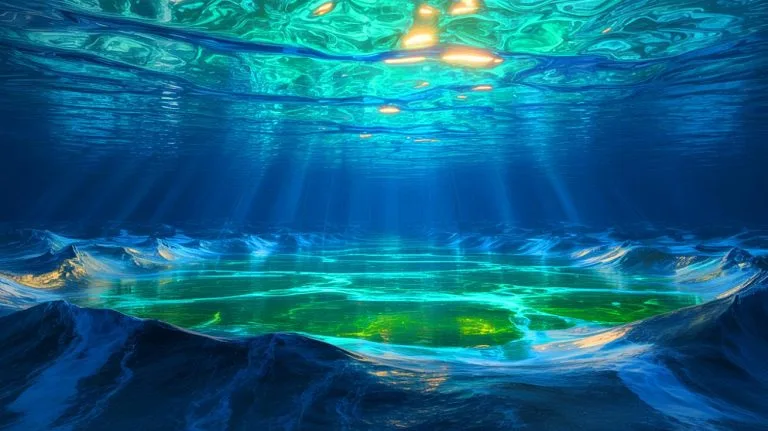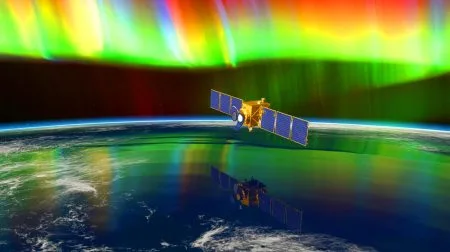| IN A NUTSHELL |
|
In a remarkable discovery, scientists have located a massive low-salinity water reservoir off the coast of the United States. This colossal aquifer is buried beneath the salty Atlantic Ocean and possesses the potential to quench the thirst of a metropolis like Paris for millennia. In a world where freshwater scarcity is becoming an alarming reality, the implications of this finding are profound. While the Earth is predominantly covered in water, the scarcity of potable freshwater poses a growing challenge. The idea of extracting drinking water from beneath the ocean floor once seemed like science fiction, but it now holds promise for addressing the world’s water crisis.
From Anomaly to Confirmation: Mapping a Hidden World
The journey to uncover this hidden ocean began with an intriguing anomaly. As early as the 1970s, oil companies drilling off the Atlantic coast stumbled upon nearly fresh water seeping from their sediment cores. Initially dismissed as a local geological curiosity, it took decades for technology to reveal the true magnitude of this phenomenon. It was only through technological advancements that researchers could visualize what was previously invisible.
The breakthrough came later with the use of electromagnetic imaging techniques. Researchers from Columbia University’s Lamont-Doherty Earth Observatory and the Woods Hole Oceanographic Institution employed this method to essentially scan the ocean floor. According to a study published in Scientific Reports, the technique measures electrical conductivity, distinguishing saltwater from freshwater due to its excellent conductivity. The results unveiled a vast and continuous structure stretching nearly 217 miles from Massachusetts to New Jersey. The estimated volume of low-salinity water is at least 670 cubic miles.
Anurag Bajpayee’s Gradiant: Engineering the Future of Industrial Water
Technological Advancements Unveil the Aquifer
The discovery of this underwater aquifer is a testament to the power of modern technology. The use of electromagnetic imaging has revolutionized our understanding of the ocean’s depths. By measuring the electrical conductivity of the subsurface, scientists were able to identify areas where freshwater was present. This technique allowed researchers to map the extent of the aquifer with unprecedented precision.
The application of this technology has opened new possibilities for exploring and understanding our planet’s hidden resources. It has also highlighted the potential for tapping into these resources to address global challenges. With freshwater scarcity becoming a pressing issue, the ability to access vast underwater reservoirs could significantly impact future water management strategies.
Potential Impact on Global Water Supply
The discovery of this massive aquifer has significant implications for the global water supply. As freshwater becomes increasingly scarce, the ability to tap into vast underwater reservoirs could provide a critical lifeline. This finding raises the possibility of developing new strategies for water management and distribution.
However, the extraction of freshwater from beneath the ocean floor is not without challenges. Environmental concerns, technological limitations, and geopolitical considerations must be addressed before this resource can be harnessed. Nonetheless, the potential benefits are substantial. The availability of such a vast reservoir could provide a sustainable source of drinking water for millions of people, alleviating the pressure on existing freshwater resources.
Eating Breakfast After This Hour Cuts 5 Years From Your Life Expectancy Scientists Warn
The Future of Water Resource Management
The discovery of this hidden aquifer prompts questions about the future of water resource management. As the global population continues to grow, the demand for freshwater is expected to increase. Traditional sources of freshwater are already under strain, making it imperative to explore new solutions.
The development of technologies to access and utilize underwater aquifers could play a crucial role in addressing future water shortages. However, careful consideration must be given to the environmental impact of such endeavors. Ensuring the sustainable use of these resources will require collaboration between scientists, policymakers, and stakeholders worldwide.
The discovery of an immense freshwater reservoir beneath the Atlantic Ocean marks a significant milestone in the quest for sustainable water resources. It highlights the potential for technological innovation to uncover hidden solutions to global challenges. As we contemplate the future of water resource management, the question remains: how can we balance the need for freshwater with the imperative to protect our planet’s fragile ecosystems?
Did you like it? 4.5/5 (28)








Wow, 670 cubic miles of freshwater! That’s like a giant ocean under the ocean! 🌊
Wow, this is mind-blowing! Could this really solve the water crisis? 🤯
How do we ensure that extracting this water won’t lead to geopolitical conflicts?
Electromagnetic imaging is so cool! Science never ceases to amaze me. 🌊
Are there similar aquifers in other oceans? Just curious.
Sounds promising, but what about the environmental consequences? 🤔
This feels like something out of a sci-fi movie! Can’t wait to hear more. 🚀
Can this discovery be applied to other water-scarce regions globally?
Finally, a positive headline! Thanks for the uplifting article.
Hope this doesn’t lead to over-extraction and environmental harm. 🌍
How deep is this aquifer? Is it accessible with current technology?
I’m skeptical. Could there be any unintended side effects of tapping into this?
How long could this reservoir meet the needs of a large population? Quantified estimates?
Does tapping into this aquifer pose any risks to marine life?
This discovery is a game-changer for water resource management! 🤩
So, is this water actually drinkable, or does it need treatment first?
Are there any plans to start using this water soon, or is it just theoretical for now?
I’m curious about the cost of extracting this water. Will it be affordable?
Imagine if we found something like this under the Sahara! 💧
Is electromagnetic imaging the only way to find these aquifers?
Hope this doesn’t lead to another race for resources among powerful countries. 😟
Amazing find! Kudos to the scientists involved in this groundbreaking research.
Could this water help regions currently suffering from droughts?
Great article! But how sustainable is this solution in the long run?
🌍 It’s amazing what we can discover with technology these days. Kudos to the scientists!
Finally, some good news about water! Thanks for sharing this discovery! 😊